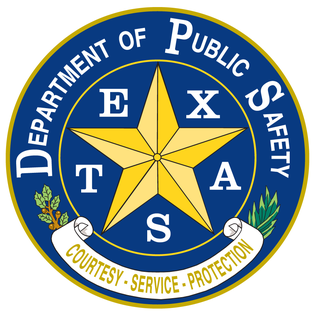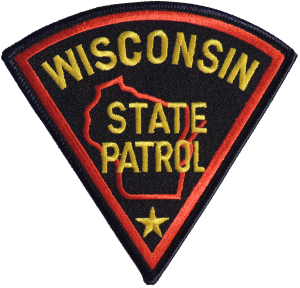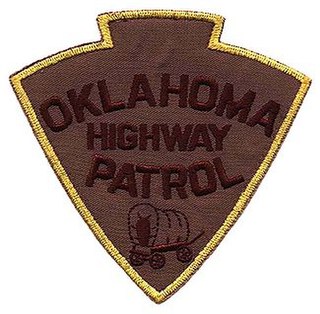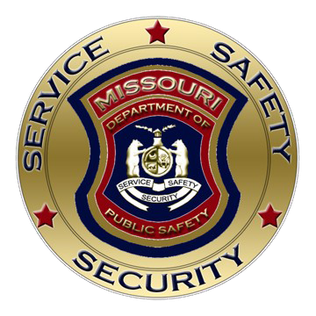
A department of motor vehicles (DMV) is a government agency that administers motor vehicle registration and driver licensing. In countries like Canada, Mexico, and the United States, DMVs are generally at the state or provincial level, while in other regions like Europe, DMVs are organized nationally.
A state bureau of investigation (SBI) is a state-level detective agency in the United States. They are plainclothes agencies which usually investigate both criminal and civil cases involving the state and/or multiple jurisdictions. They also typically provide technical support to local agencies in the form of laboratory and/or record services, or to directly assist in the investigation of cases at the local agency's request.

The Department of Public Safety of the State of Texas, commonly known as the Texas Department of Public Safety (DPS), is a department of the state government of Texas. The DPS is responsible for statewide law enforcement and driver license administration. The Public Safety Commission oversees the DPS. However, under state law, the Governor of Texas may assume command of the department during a public disaster, riot, insurrection, formation of a dangerous resistance to enforcement of law, or to perform his constitutional duty to enforce law. The commission's five members are appointed by the governor and confirmed by the Texas Senate, to serve without pay for staggered, six-year terms. The commission formulates plans and policies for enforcing criminal, traffic and safety laws, preventing and detecting crime, apprehending law violators, and educating citizens about laws and public safety.

The Federal Law Enforcement Training Centers (FLETC) serves as an interagency law enforcement training body for 105 United States government federal law enforcement agencies. The stated mission of FLETC is to "...train those who protect our homeland". It also provides training to state, local, campus, tribal, and international law enforcement agencies. Through the Rural Policing Institute (RPI) and the Office of State and Local Training, it provides tuition-free and low-cost training to state, local, campus and tribal law enforcement agencies.

The West Virginia State Police (WVSP) is a state law enforcement agency in the United States that provides police services to the residents of West Virginia. It is the fourth-oldest state police agency in the US. The WVSP was disbanded due to their involvement in quelling of the uprisings on behalf of the coal and mine companies which were surrounding the concept of organized labor in the coal and mine industries. The WVSP was then reorganized as the Department of Public Safety in the second extraordinary session of the West Virginia Legislature on June 19, 1919, as a result of their involvement.

The Alaska State Troopers, officially the Division of Alaska State Troopers (AST), is the state police agency of the U.S. state of Alaska. It is a division of the Alaska Department of Public Safety (DPS). The Alaska State Troopers is a full-service law enforcement agency which handles both traffic and criminal law enforcement. The Alaska State Troopers is also involved in apprehending fugitives as part of the Alaska Fugitive Task Force, an inter-agency collaborative of Alaska police departments that cooperates with police agencies throughout the United States and less commonly with Interpol in apprehending wanted men and women. Unlike many lower-48 states, Alaska troopers are both state troopers and game/wildlife enforcement officers.

The New Hampshire Department of Safety is a government agency of the U.S. state of New Hampshire. The Department of Safety is under the executive direction of Commissioner of Safety Robert L. Quinn. The main office of the Department of Safety is located at the James H. Hayes Safety Building in Concord.

The Wisconsin State Patrol is the highway patrol for the state of Wisconsin and is a division of the Wisconsin Department of Transportation. The Wisconsin State Patrol enforces traffic and criminal laws, oversees the motor carrier safety and weight facilities (SWEFs), inspects and regulates motor carriers, school buses and ambulances, and assists local law enforcement agencies with traffic safety, civil disturbances and disasters.

The Maryland State Police (MSP), officially the Maryland Department of State Police (MDSP), is the official state police force of the U.S. state of Maryland. The Maryland State Police is headquartered at 1201 Reisterstown Road in the Pikesville CDP in unincorporated Baltimore County.

The Oklahoma Highway Patrol (OHP) is a major state law enforcement agency of the government of Oklahoma. A division of the Oklahoma Department of Public Safety, the OHP has traffic enforcement jurisdiction throughout the state. OHP was legislatively created on July 1, 1937, due to the growing problem of motor vehicle collisions, the expansion of highway systems, and the increase in criminal activities.

The Wisconsin Department of Administration (DOA) is an agency of the Wisconsin state government which provides a range of services and programs, from operations, technology, and logistical support for the state, to assistance programs for low-income homes, to state gaming. The department's services to other state agencies and offices include personnel management, payroll, accounting systems, technology solutions, and legal services. The Department is central to the state budget process, advising the Governor and state agencies on their budget submissions and analyzing solutions to fiscal problems. The Department also administers state information systems, procurement policies and contracts, fleet transportation, and risk management, and oversees buildings owned and leased by the state, facilities planning projects, and the Wisconsin Capitol Police.

The Arizona Department of Public Safety (AZDPS) is a state-level law enforcement agency with a primary function of patrolling and enforcing state laws on Arizona highways. Director Heston Silbert was promoted from Deputy Director to Director in April 2020, upon the retirement of former Director Frank Milstead. Its headquarters are in Phoenix.

The Oklahoma Department of Public Safety (ODPS) is a department of the government of Oklahoma. Under the supervision of the Oklahoma Secretary of Public Safety, DPS provides for the safety of Oklahomans and the administration of justice in the state. DPS is responsible for statewide law enforcement, vehicle regulation, homeland security and such other duties as the Governor of Oklahoma may proscribe.

The Oklahoma State Bureau of Investigation (OSBI) is an independent state law enforcement agency of the government of Oklahoma. The OSBI assists the county sheriff offices and city police departments of the state, and is the primary investigative agency of the state government. OSBI works independent of the Oklahoma Department of Public Safety to investigate criminal law violations within the state at the request of statutory authorized requesters. The OSBI was created in 1925 during the term of Governor Martin E. Trapp.

The New Mexico State Police is the state police agency for New Mexico, which has jurisdiction anywhere in the state. It was created to protect the lives, property and constitutional rights of people in New Mexico. The State Police is a division within the New Mexico Department of Public Safety.

The Maryland Natural Resources Police (NRP) is the law enforcement arm of the Maryland Department of Natural Resources (DNR), tasked with enforcing laws on the state's public lands and waterways, protecting fish and wildlife, and leading search and rescue efforts. The Natural Resources Police is also the state's maritime homeland security agency.

The Florida Department of Law Enforcement (FDLE) is a state-wide investigative law enforcement agency within the state of Florida. The department formally coordinates eight boards, councils, and commissions. FDLE's duties, responsibilities and procedures are mandated through Chapter 943, Florida Statutes, and Chapter 11, Florida Administrative Code. FDLE is headed by a commissioner who reports to the Florida Cabinet, which is composed of the governor, the attorney general, the chief financial officer and the commissioner of agriculture. The commissioner is appointed to his position by the governor and cabinet and confirmed by the Florida Senate.

The Department of Public Safety of the State of Missouri, commonly known as the Missouri Department of Public Safety (DPS), is a department of the state government of Missouri.

In the United States, the state police is a police body unique to each U.S. state, having statewide authority to conduct law enforcement activities and criminal investigations. In general, state police officers, known as state troopers, perform functions that do not fall within the jurisdiction of the county sheriff, such as enforcing traffic laws on state highways and interstate expressways, overseeing the security of the state capitol complex, protecting the governor, training new officers for local police forces too small to operate an academy and providing technological and scientific services. They support local police and help to coordinate multi-jurisdictional task force activity in serious or complicated cases in those states that grant full police powers statewide.



















